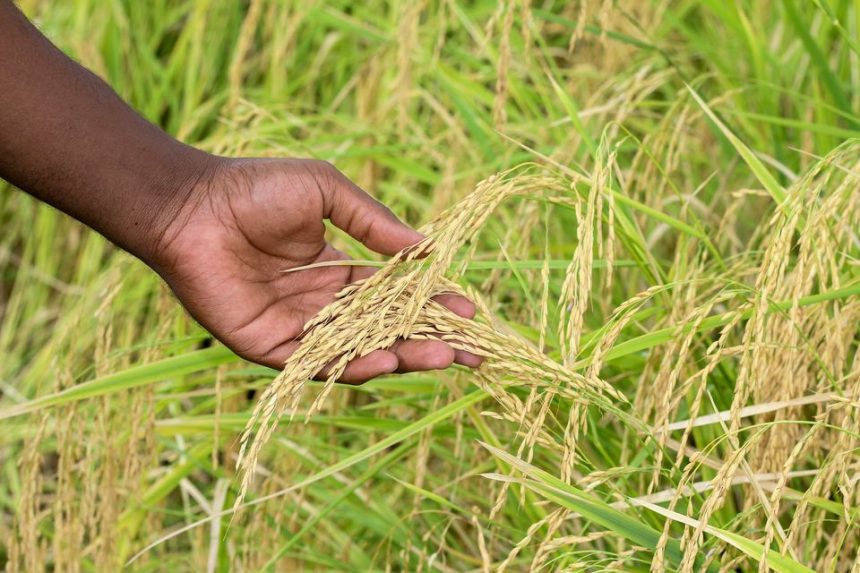The popularity of rice in Kenyan meals has prompted the government to adopt strategic interventions to increase production due to rising demand, changing consumer patterns and high import costs.
Annual rice consumption is increasing at a rate of 12 per cent compared to four per cent for wheat and one per cent for maize (ugali) – a growth attributed to progressive changes in eating habits.
This soaring demand has also compelled Kenyan researchers to join colleagues in the East African Community (EAC) in collaborative efforts to increase rice production in a sustainable, safe and nutritious way.
Kenya imported rice worth $275 million (Sh37 billion at current exchange rates) in 2021. The imports were from Tanzania, which is now self-sufficient ($96.2million), Pakistan ($86.7 million), India ($81.5 million), Thailand ($5.98 million), and South Korea ($2.32 million).
Increase production
Now the race is on to raise rice production in a sustainable way that benefits local consumers, smallholder farmers and Small and Medium Enterprises (SMEs).
Previously regarded as an “orphan crop”, the government declared rice an important crop to supplement maize and in 2008 launched the Kenya National Rice Development Strategy (KNRDS 1) 2008-2018 to double rice production in the country.
“There is potential to place 200,000 hectares in 24 counties under rice production. We want to increase production from four metric tonnes per hectare to 7.5 or more through new varieties, good seed and better agronomic practices,” says Ministry of Agriculture’s Head, Rice Promotion Programme Dr Mary Mutembei.
This first strategy achieved its objective of doubling production levels, tripling paddy rice production from 52,000 to 150,000 metric tonnes by 2016, but still fell far too short of consumption levels. The consumption per capita stood at 14.2 kilogrammes in 2021.
The Coalition of Rice Development in Africa (CARD) is supporting EAC partner states to consolidate the rice sector development efforts through national rice development strategies.
CARD statistics show Kenya’s paddy production stood at 186,000 metric tonnes in 2021, a figure targeted to rise to 1.3 million tonnes in 2030 under KNRDS 2 (2019-2030).
To meet rice demand from local production that competes commercially with imported rice, local yields must be increased, and efficient value chains established.
Instead of doubling or tripling production, Kenya must increase production seven times current levels to achieve this multiple objective. Currently, the area under rice production is only 25,548 hectares, targeted to rise to 222,000 hectares in 2030 under KNRDS 2. According to CARD, Kenyans in 2021 consumed 763,000 metric tonnes of rice, most of it imported. This figure is expected to reach 1.3 million metric tonnes by 2030.
With Kenya importing 617,000 metric tonnes of rice in 2021, compared to the locally produced 186,000 metric tonnes, it means the country produced about only 20 per cent of the rice consumed nationally.
Rising consumption and the huge import bill forced the government to establish KNRDS 2 (2019-2030) dedicated to attaining self-sufficiency, decreasing imports and enhanced utilisation of rice by-products.
Getting it right
“The task ahead is huge due to the changes in consumption patterns, particularly the drop in maize and the big rise in rice consumption,” notes Dr Mutembei.
There is urgent need to close the demand-supply gap and collaborative efforts to improve on technology, with a big challenge in milling (in the field and on farm).
“We need to get it right in the field and extension to farmers, matching what we produce and what the consumer wants, such as affordability,”
Sustainability is crucial. That is why researchers are working to generate evidence for increased adoption of sustainable rice production systems. For example, rice husks are being used in producing coffee nurseries, generating evidence to help quantify benefits of rice by-products on the environment.
Rice by-products benefits include improved uptake of nutrients, enhanced water holding capacity in sandy soils, better water balancing, a boost to the thermal economy through darker surfaces, resistance to diseases, microbiological activity and diversity, and the binding and decomposition of plants.
Kilimo Trust, a not-for-profit organisation engaged in research for the past 18 years, is working with the EAC Secretariat to drive the region’s agenda for agriculture and food security amid growing challenges of climate change and water scarcity.
In March, the organisation launched in Kampala, Uganda its latest research project – the Reduce, Reuse, Recycle Rice Initiative for Climate Smart Agriculture Phase II (R4iCSA II) to promote sustainable, science-based, market-led agricultural development in the region.
The five-year R4iCSA II project worth over $5 million funded by IKEA Foundation that started in October 2022 is a sequel to a two-year pilot that ended in July, benefitting 5,000 smallholder farmers in Kenya and Uganda, and now targets 10,000 households in the two countries.
The evidence-based phase of the R4iCSA II project aims at building robust evidence of the economic benefits of innovations that utilize rice products tested in phase one of the project’s implementation.
“The objective of the project is to generate and verify evidence for the promotion of innovative technologies for regenerative and sustainable rice farming systems that leads to better livelihoods and environment,” says project leader Anthony Mugambi Makona.
The evidence generated will inform stakeholder engagement in the pursuit of creating an enabling environment to promote regenerative agriculture in the rice sub-sector. R4iCSA II is expected to lead to the increased adoption of sustainable rice production practices, increased awareness of wetlands conservation and protection using evidence obtained from the studies. Another expected outcome is the increased adoption of rice-legumes integration (green grams, soya beans, chicken peas) among rice farmers.
Supporting smallholder farmers
The project also aims at increased access to inputs and output markets for rice products, by-products and legumes and the increased adoption and utilisation of products and by-products from rice and other complementary farm enterprises.
R4iCSA II is also expected to provide evidence-based knowledge products on circular and regenerative practices documented and shared to influence policy shifts, while also strengthening Kilimo Trust’s institutional capacity.
Speaking during the launch, Kilimo Trust CEO Dr Birungi Korutaro disclosed that the organisation has worked with close to two million farmers across 17 agricultural value chains and programmes worth $16 million.
The work, substantially in rice, focuses on smallholder farmers for increased production through sustainable farming practices and agribusiness with SMEs and processors to improve milling efficiency and access to markets.
Kilimo Trust has undertaken several successful projects in the region based on inclusive, sustainable, regenerative and climate-smart agriculture and the circular economy that R4iCSA II will continue to champion. They include the Competitive Africa Rice Initiative, East Africa (CARI-EA) project commissioned by USAID through AGRA that concluded last August. CARI-EA aimed at enabling the inclusive transformation of the region’s rice sub-sector so that locally produced rice in East Africa can competitively substitute the over $350 million worth of rice currently being imported into the East Africa Common Market.
“Kilimo Trust is committed to addressing the EAC’s agriculture sector challenges by structuring national and regional trade in agricultural products to make agribusiness a transformative tool for wealth creation and enhancing food and nutrition security for smallholder farmers and value chain actors,” says Korutaro.
Working with local, regional and international partners, it supports smallholder farmers to improve productivity, profitability, competitiveness and commercialisation jointly with the EAC Secretariat, the private sector and grassroots associates in multiple regions across East Africa.
The work has impacted smallholder farmers and a pool of processors and SMEs involving input suppliers and aggregators. Farmers have adopted productivity-enhancing technologies and practices, accessing improved seeds and fertiliser.




